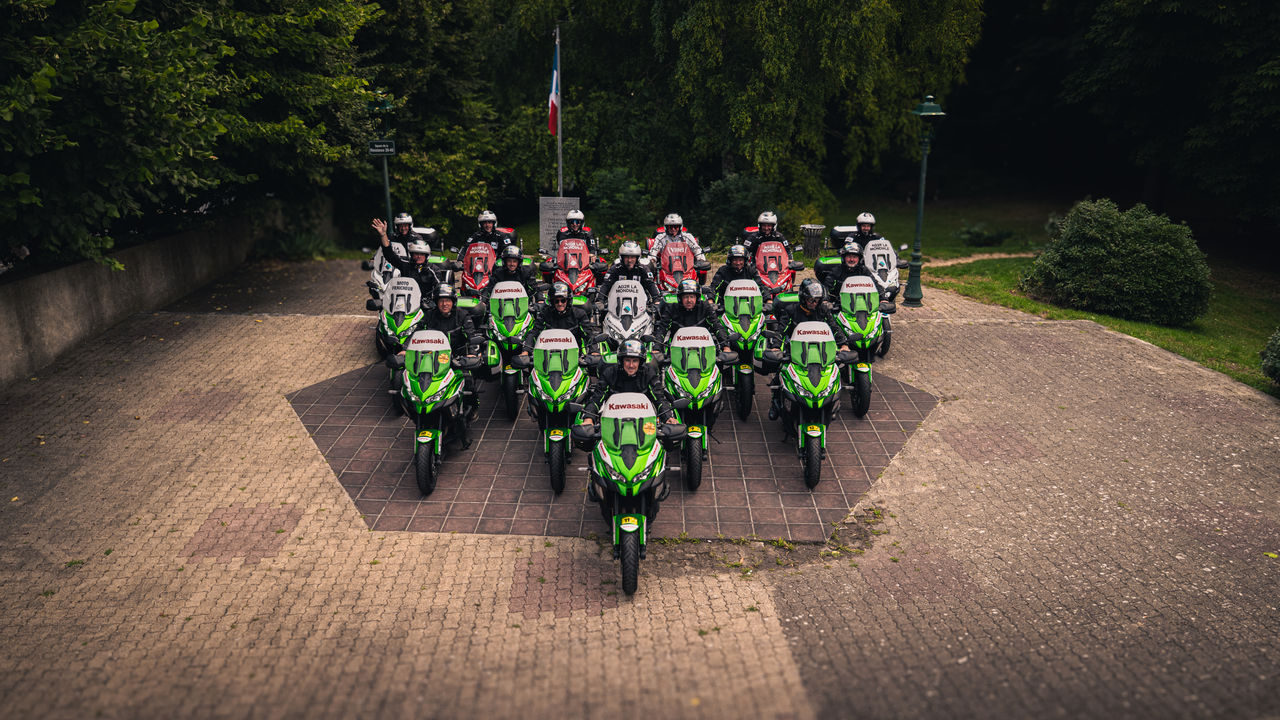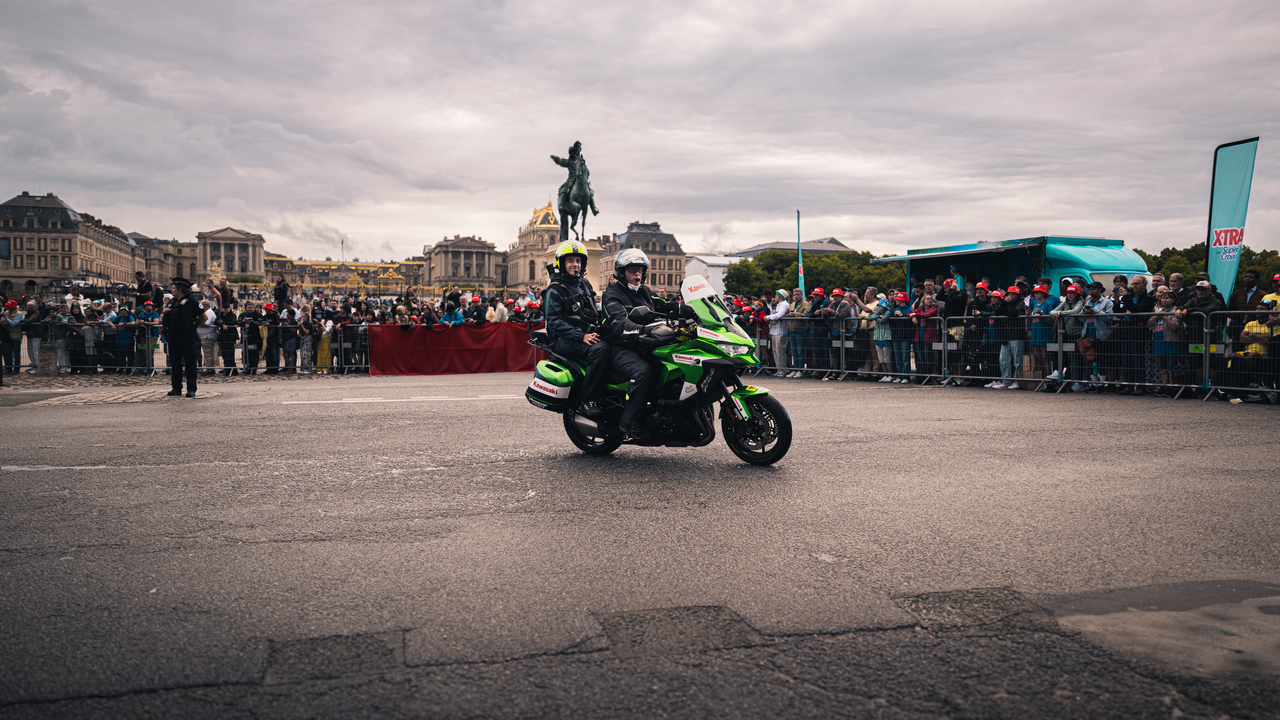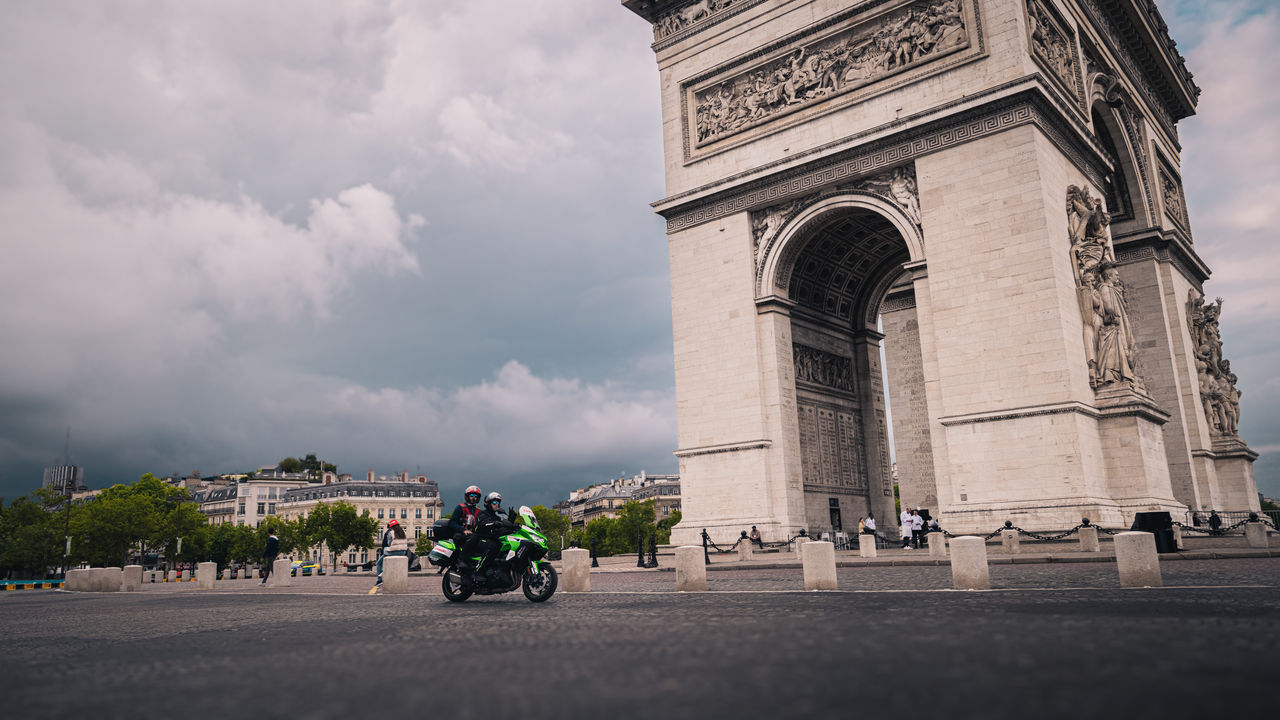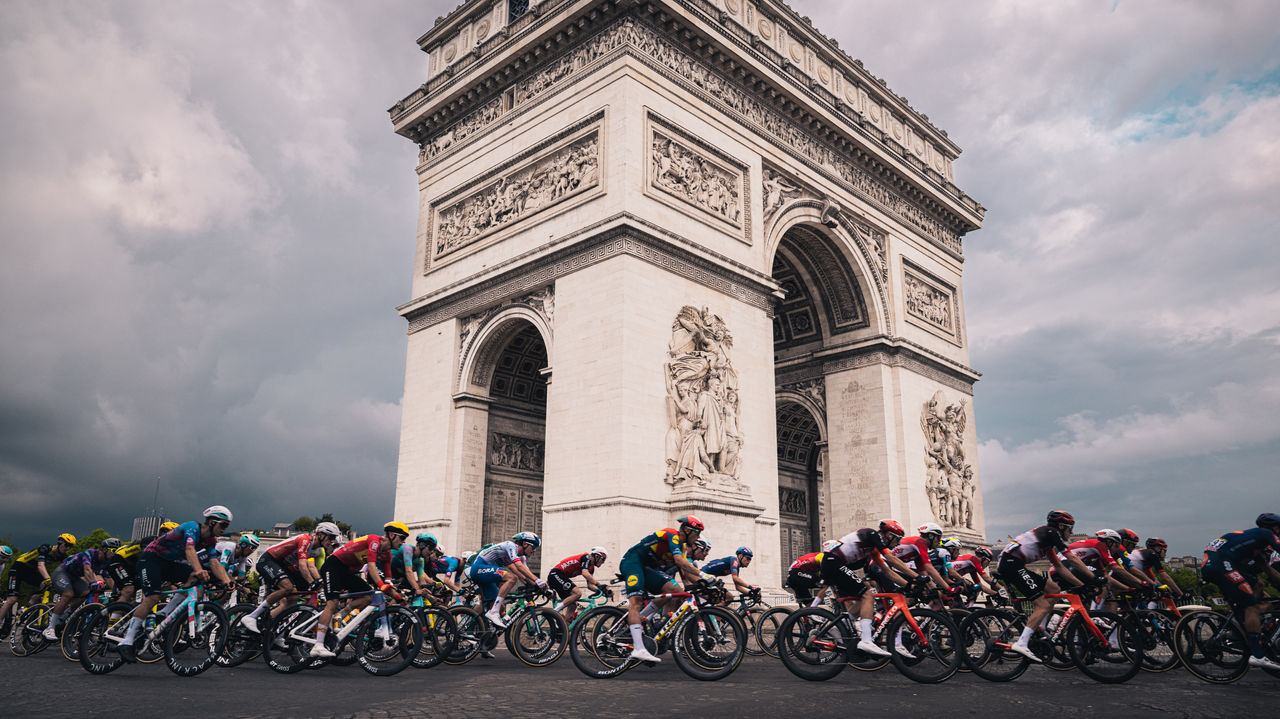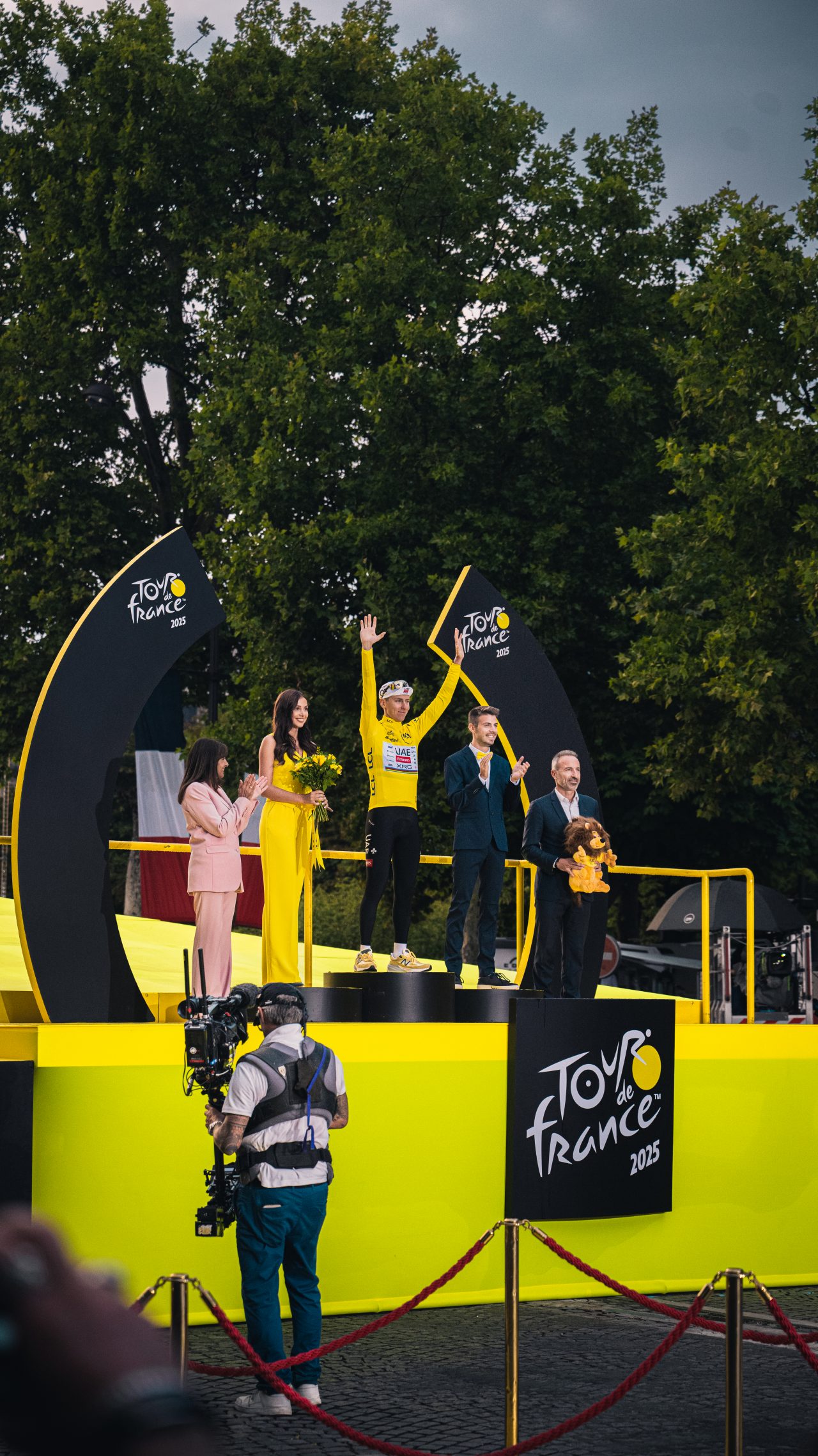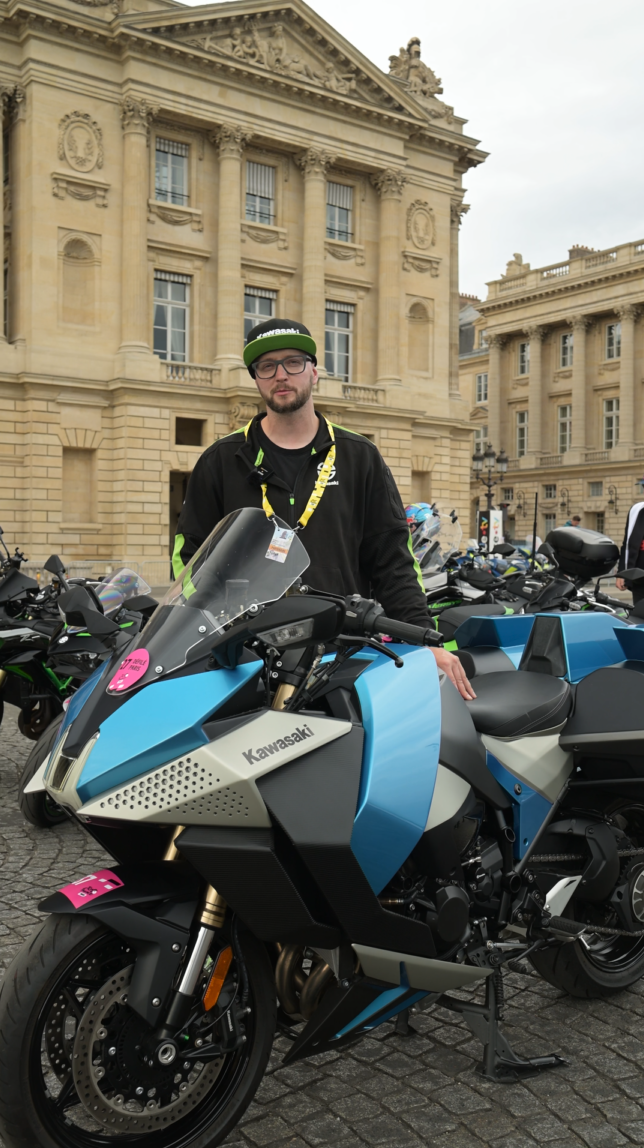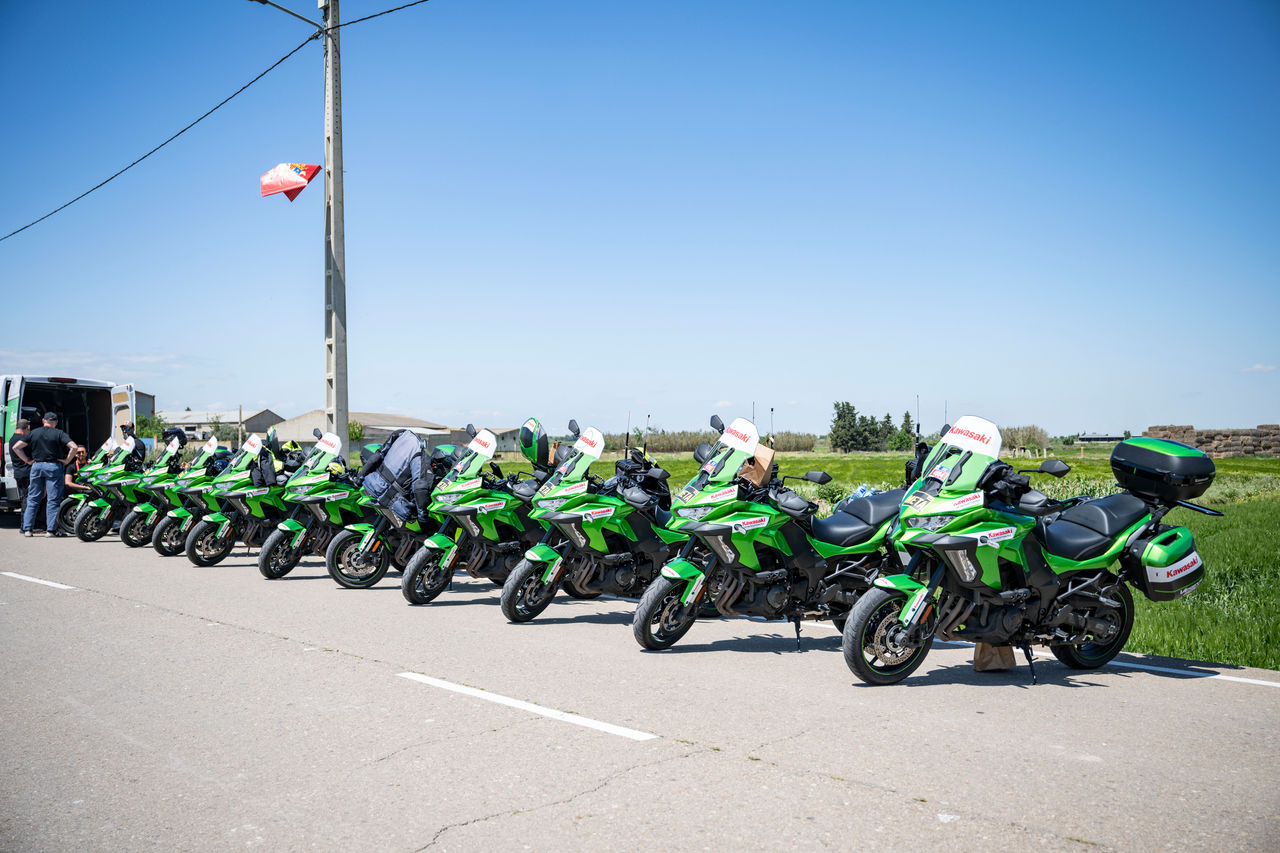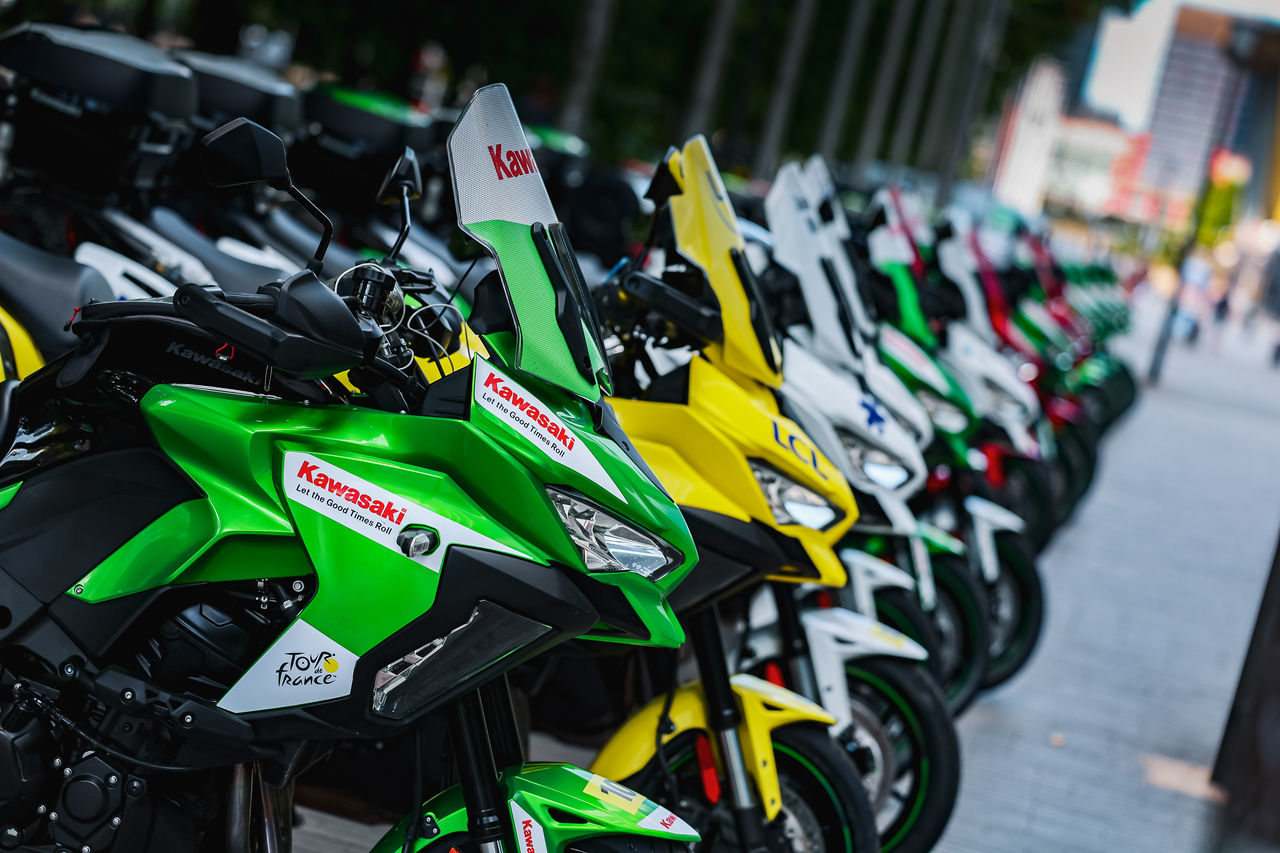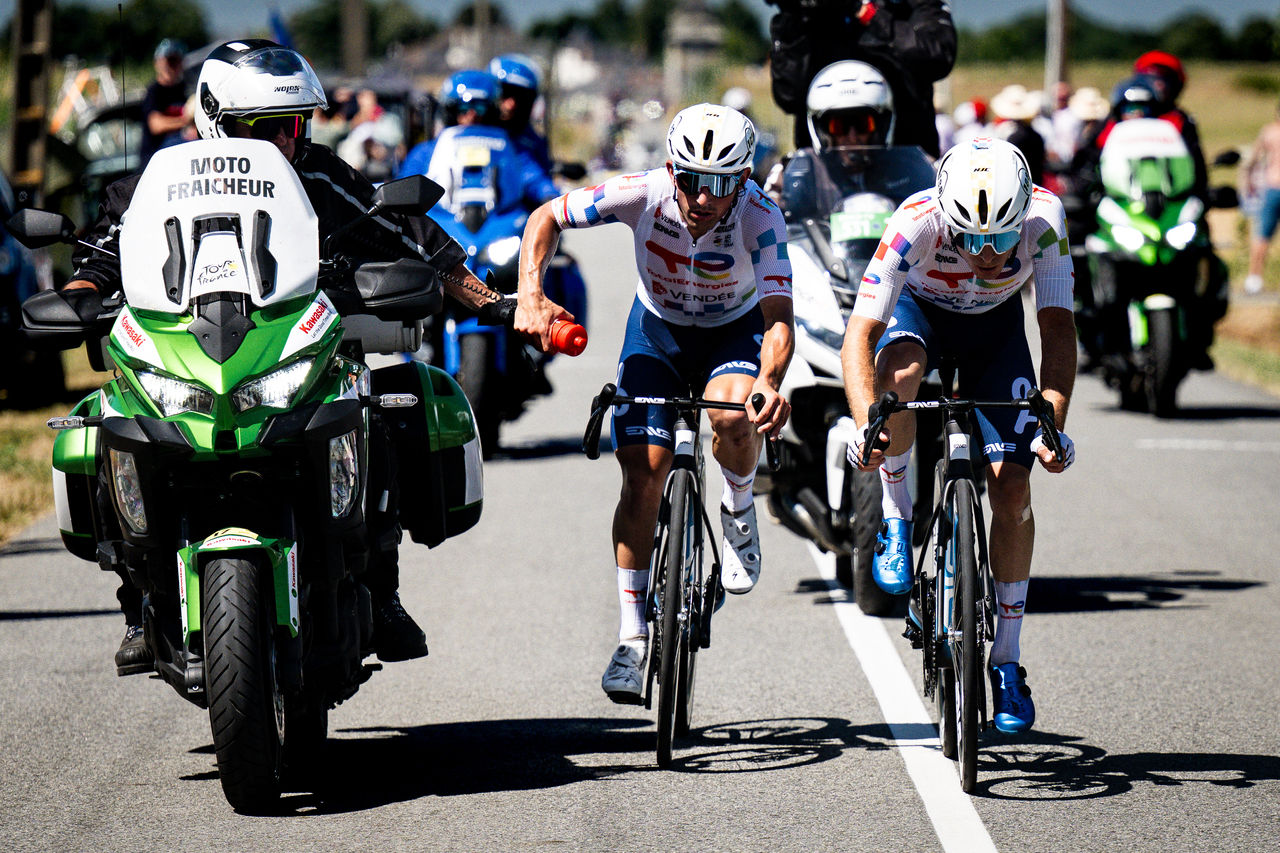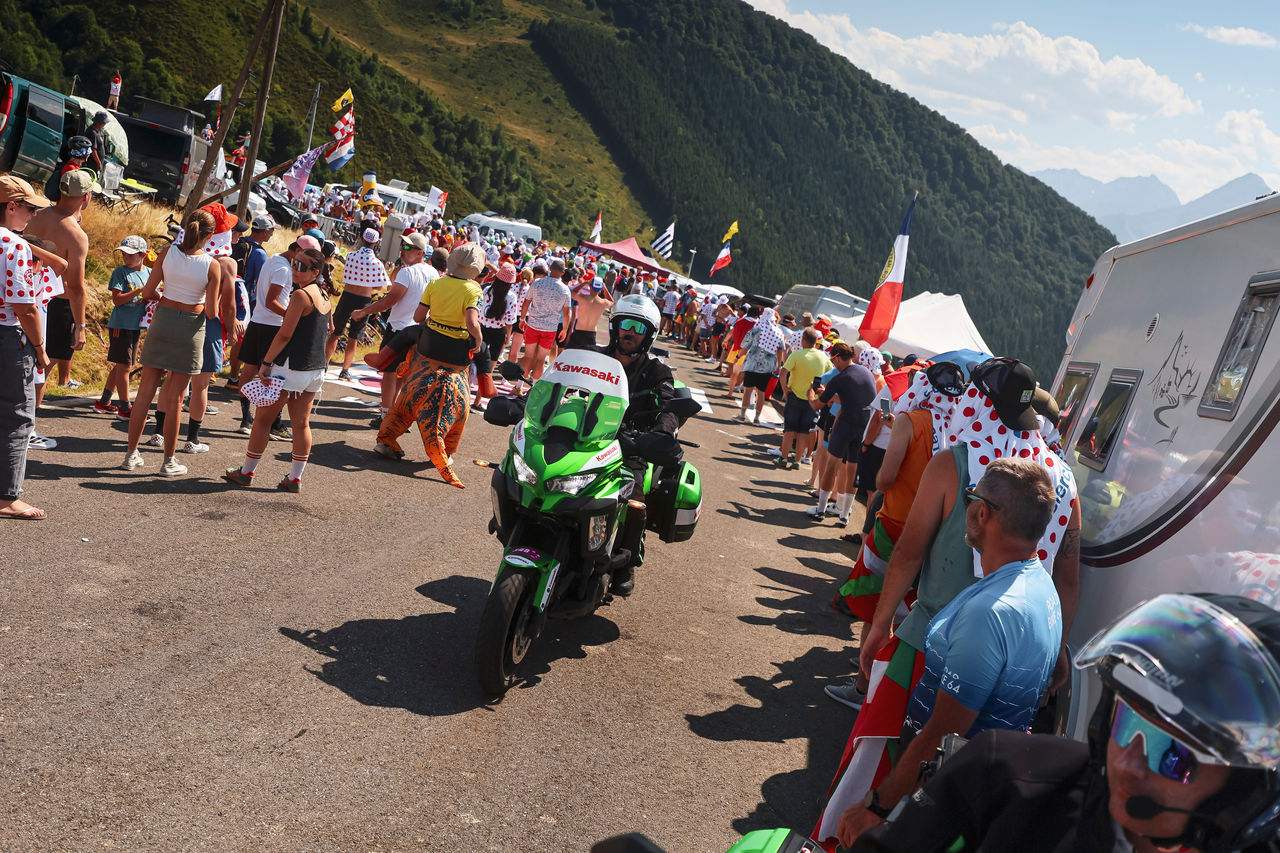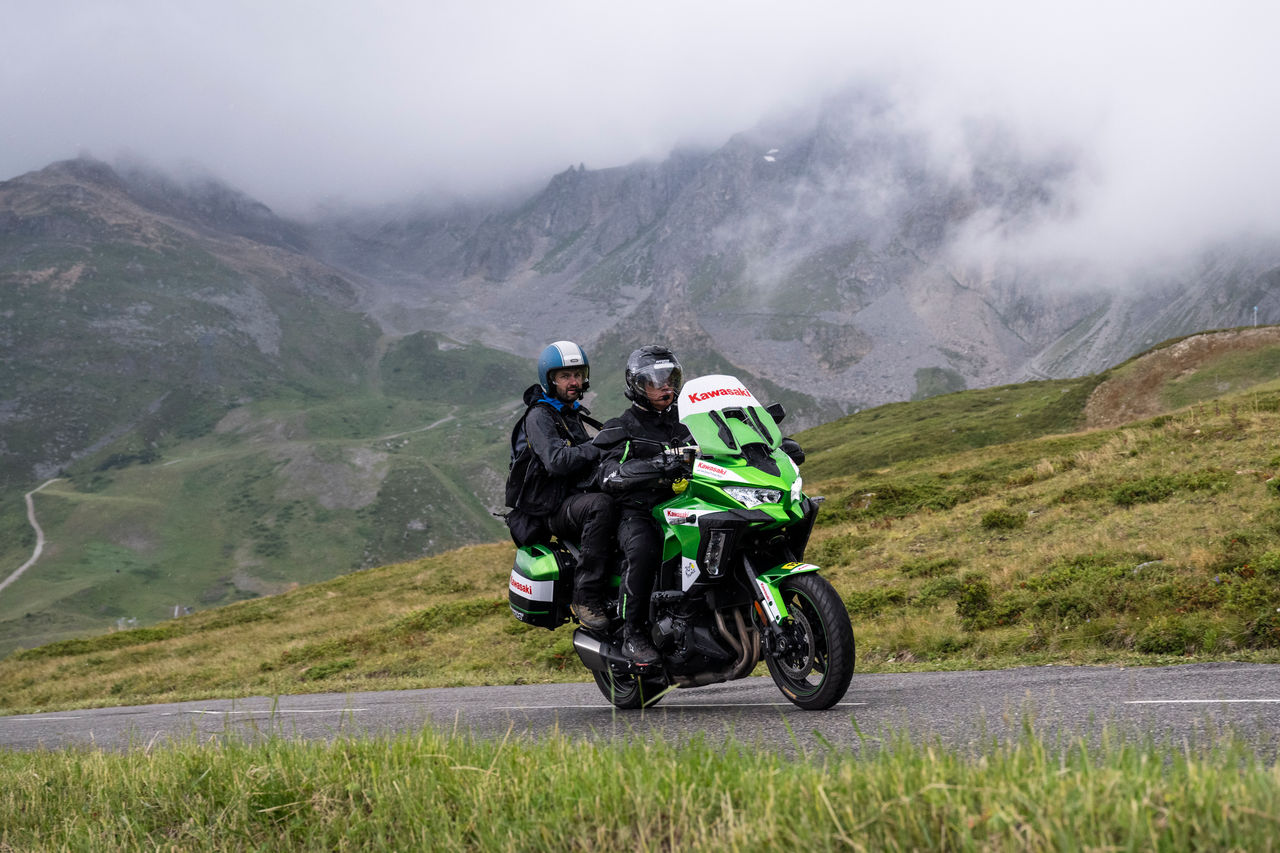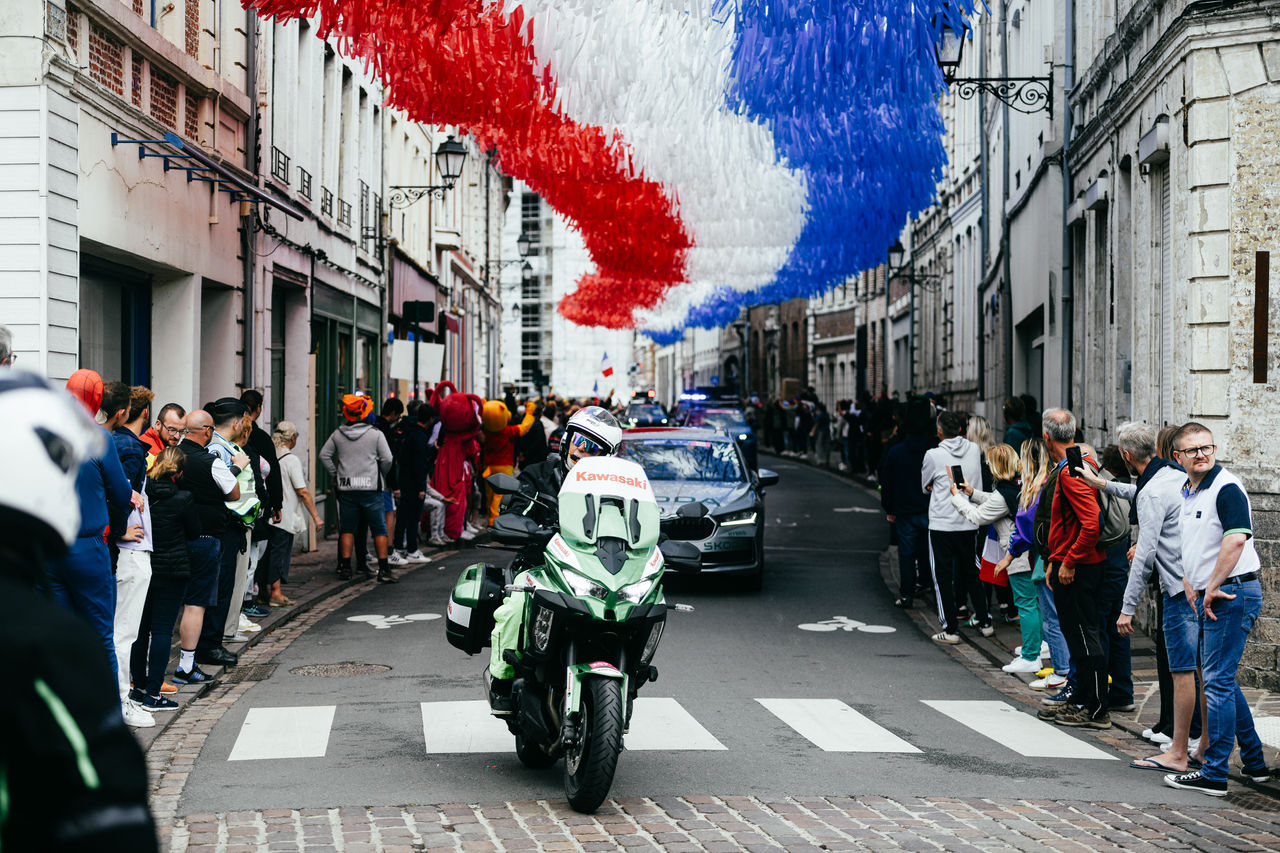Kawasaki goes Green at Tour de France
Not only the world’s most famous cycling event, but among the most demanding for competitors and teams alike, the annual Tour de France culminated on the iconic Champs Elysee in Paris over the final weekend of July and Kawasaki played its part in a thrilling conclusion to over 3300Kms of racing.
While hundreds of thousands of fans lined the route of the twenty first and final stage – plus a global television audience estimated in the millions watched – the race for the line also created a platform for the organisers of the event, and key partners such as Kawasaki, to demonstrate their drive toward a cleaner, greener future including a public demonstration of a unique Hydrogen powered prototype motorcycle.
With its ambition to reduce the carbon footprint of the huge and complex event by 50% by 2030 aligning perfectly with Kawasaki’s similar drive for carbon neutrality, every aspect of the race and its infrastructure are under the microscope via initiatives to not only reduce emissions within the race structure itself but also offer opportunities for spectators to benefit.
Kawasaki returned to this arena in 2025 as Official Motorcycle Sponsor of the event having first been involved in 1976 and will retain the sponsorship until 2027. While the world itself and cycling have evolved over that period, the ethos of leading by example remains embedded with ASO, the organisers of the tour, making Kawasaki’s involvement highly relevant.
Not only were the organising team provided with a fleet of fuel frugal Versys 1100 machines, but the Japanese company also worked with ASO across the event to highlight the huge environmental advances recently made in the world of powered two-wheelers.
As part of the “Caravan” parade which takes place before each stage of the race, the final and twenty first caravan gave the huge audience an opportunity to see not just conventional internal combustion powered Kawasaki motorcycles, but also a wholly electric EV machine and the unique Z-7 Hybrid both of which are part of the current model range available at any Kawasaki motorcycle dealer.
The EV machine is offered in both “naked” Z style and a cowled Ninja style representing Kawasaki’s first foray into 100% electric motorcycling while the Hybrid (also offered in Z and Ninja guises) is able to operate as wholly electric, gasoline powered or a combination of the two along with the option of conventional gearbox with paddle shifting or automatic transmission according to setting and rider preference.
Joining for the ride into the Champs-Elysées, the Hydrogen ICE (internal combustion engine) motorcycle was ridden by Kawasaki test rider, Matthias Hoeppner at the head of a phalanx of Kawasaki machines while the Versys 1100 event motorcycles were still engaged in their organisational duties covering security, road closures and the coordination of the peloton itself.
Based on Kawasaki’s innovative and wholly in-house developed and manufactured “balanced Supercharged” engine and chassis platform- which form the basis of the successful Ninja H2 SX -the almost emissions free machine passed the assembled crowd anticipating the culmination of the twenty one stage race included Mr Hiroshi Ito – President and Chief Executive Officer of Kawasaki Motors, Ltd.– along with Mr. Yasuhiko Hashimoto - President of KHI (Kawasaki Heavy Industries) - who jointly represented Kawasaki at the event.
Commenting on the machine and how it performed, Hoeppner declared himself delighted with the demonstration and the reception of the crowd.
“The Tour de France is such a famous global event and, at first, it was hard to fully appreciate that I would be piloting Kawasaki’s unique Hydrogen ICE machine in front of a combined worldwide muti-million audience.
As I expected, the bike performed flawlessly and it was a proud moment to be at the head of a Kawasaki display that showcased the breadth of our two wheel technology from fuel efficient gasoline engine equipped bikes to fully EV and Hybrid machines.
It was fitting that Mr Ito and Mr Hashimoto were present to see the public reaction to all the hard work being undertaken by our engineers on this and other Kawasaki low-emission and carbon neutral projects.”
